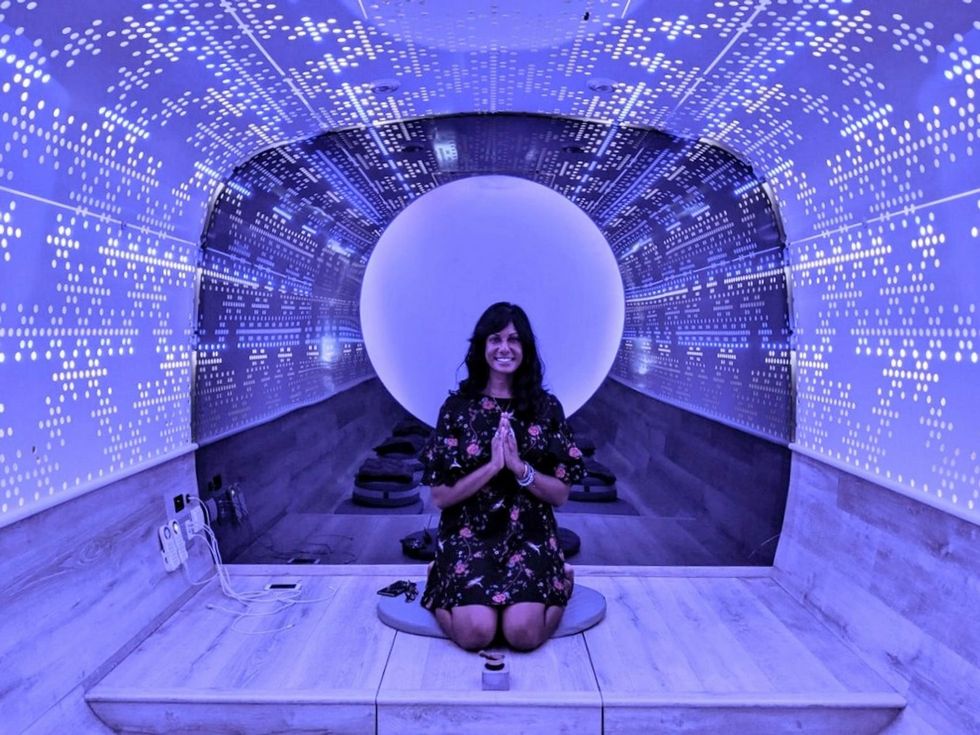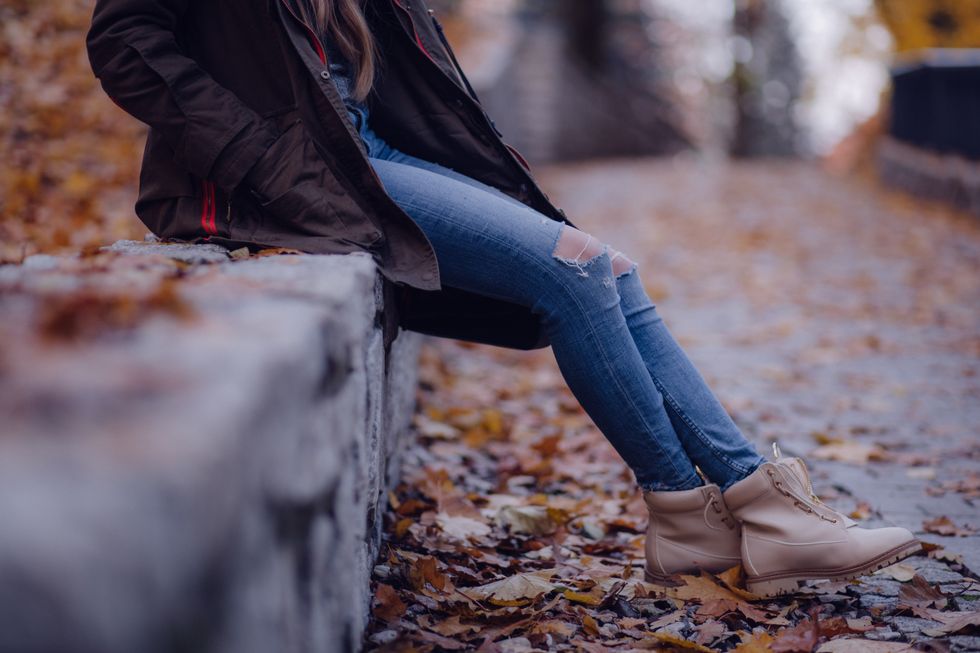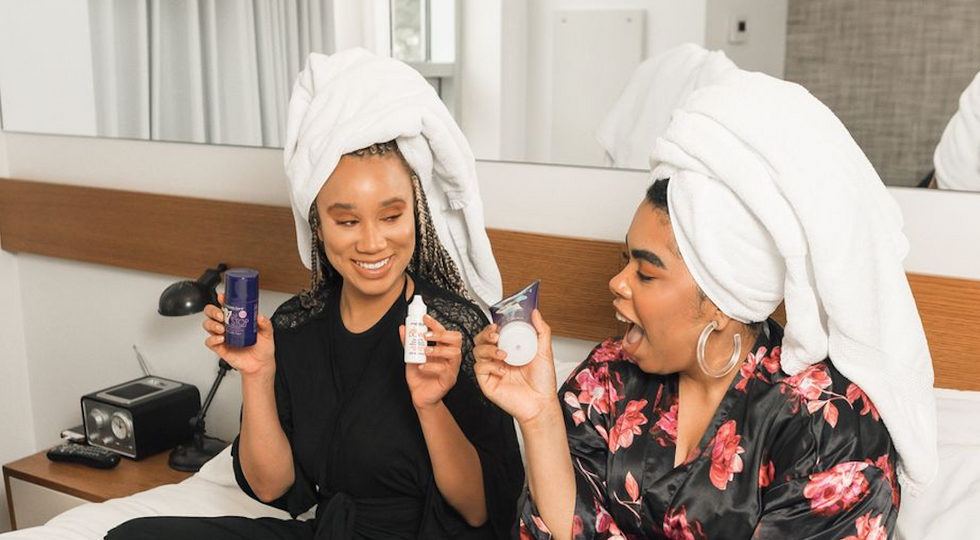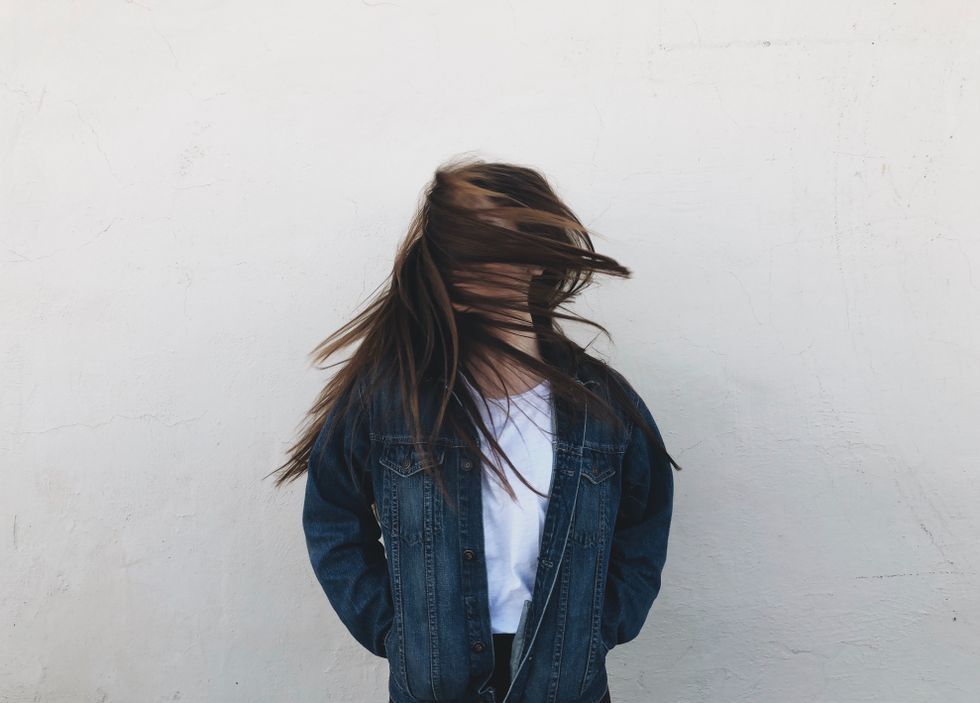I Spoke To A Mental Health Therapist About How We Can Put Wellness First In 2020
It's all about being intuitive and finding a balance.
We could all use a mental health check-in, especially as we approach the end of a wild calendar year. Each of us has faced obstacles we probably didn't see coming in January, and whether you're feeling confident or terrified about the end of the year, a mental health reset is probably a good idea.
Shalyni Paiyappilly is a mental health therapist and yoga and meditation teacher who has remained diligent in helping her patients and students stay healthy, whether virtually or in person. She took some time to share how her roles have evolved since New York City first shut down in March 2020, as well as how the climate surrounding mental health has shifted and grown even more apparent in 2020.
Tell us a little bit about yourself.
I'm originally from Florida, but I moved to New York City about 10 years ago with a psychology degree and a lot of experience volunteering within lower-income communities and hospitals. I went through the life coaching program at NYU, but I didn't want to pigeonhole myself into that track, so I went to graduate school at Fordham and worked with special needs populations. It was with those special needs populations that I first began teaching meditation — it was beautiful to witness that peace and progress.
I also worked in an addiction program within underserved communities. That was such a transformative experience and really shaped how I view people to this day. It's all about respect, no matter who you're talking to or what you're talking about.
I'm currently a mental health therapist, as well as a yoga and meditation teacher.
You've worked in a lot of mental health spaces, what's it been like experiencing so much of the field?
You know, I'm not sure how familiar you are with mental health and social services... there's a lot of politics happening. We don't really get paid very well for all the work we're doing, which is unfortunate. The people we work with need a lot of help and workers at these clinics are overworked, making it hard for everyone.
That's actually one of the reasons I left my last clinic and into a different niche of wellness. I began working in a luxury detox space in the Upper East Side. I went from the homeless to the affluent in clientele! Now I work in mental health private practice in Brooklyn, and I teach yoga and meditation for a coworking space in the Financial District.
Tell us a little about your meditation teaching experience.
Have you heard of Nap York? It's right by Penn Station. They essentially had little sleeping beds (or pods) that people could use to rest in the middle of their busy workdays. They were also offering yoga and meditation. This place is literally on the same block I would walk down every day to get to work — I always thought it looked so cool!
I sent Nap York an Instagram message and, long story short, I started doing meditation classes for them. They, unfortunately, had to close, but it opened the door for teaching meditation for me.
When did you start teaching yoga?
When I moved to the detox job, my management asked me if I'd start teaching yoga. To be honest, I was the only Indian in this facility. A lot of my coworkers kind of pigeonholed me — one of the top managers would often introduce me to new clients with "and this is our guru!"
They kept pushing this yoga concept on me and I finally thought, why not? I started yoga teacher training (so many hours!) while I was working at the detox clinic. Now I've taught yoga in multiple spaces. I also now teach three times a week (both yoga and meditation) for the mayor's office! So that's been lovely to serve that group of people.
As a mental wellness professional, what do you think the nation's biggest mental health crisis is right now?
I think a lot of folks are struggling with not having their normal social experience in person. I've had so many patients who are so exhausted by everything online. They want live connection and it's really hard right now.
What are some coping methods you give these patients who crave in-person connection?
Everyone has a range of comfort in what they're willing to do right now. Some people will be OK taking a socially distanced walk with a friend, while others won't even think about it. While I believe we do need to err on the side of caution, it is a fine balance. I've asked many patients to identify people in their life who would be willing to take those socially distanced walks — or even people who could come by their apartment and talk to them from the street, so they can actually see people!
I've also encouraged meditation and yoga, of course. This pandemic experience has gone on for some time now, but we do know that at SOME point, things will begin to change. At the beginning of all of this, people were panic-buying toilet paper! Now the dust has kind of settled.
It's a great time for people to be more introspective and engage in the things they used to do. Exploring old hobbies and learning new things can be really helpful to combat isolation. If you continue to feed your depression, you will continue to feel stuck.
If someone has explored all these options and has not found a successful fit, then I may recommend looking into medication, even if for just a short time to mobilize their mental health.
What do you believe are some mental health differences for people in cities versus people in rural communities?
Well, all the clients I see are in a city. But I've found that New York City is the most alive place in all of the U.S. I'm grateful — for me, it's been helpful to be here even though it's away from my family. Here, I have my friends and my life is happening here. There is so much happening here that I feel is helping the mental health of our community.
Rural communities don't have instant access, especially if things are still closed. But at the same time, rural communities have more nature and space, which is a beautiful form of therapy, too.
Have you been swarmed with new clients amidst the pandemic?
YES, it has been such an uptick of clients. At first, I thought it was fine, but it quickly became overwhelming. I've just recently reduced my caseload and been offering more yoga and meditation. I'm engaging in my creative pursuits, which has been so uplifting for my own life.
How are virtual sessions different than in-person sessions?
Yes, everything is virtual. I had some patients who just did so much better when we could meet in person. There's this energetic experience that is so difficult to translate to a screen. Some of my folks have regressed because of this. Often times I can tell so much through body language, so it's hard for me to only see someone's face. I've had to take a break with some patients because it was just too much — their job was online and then extra online time just wasn't working.
But overall, most people are so thankful that the online option exists. My clinic has been talking about opening up sometime soon, but many of my patients have mentioned how virtual meetings are more convenient.
Virtual sessions, like everything, were something to get used to as we began this in March. There was a lot of rescheduling at the beginning of everything because of this, but now we're in a much better routine.
You mentioned experience with underserved communities, many of which have been hit incredibly hard this year. What are some needs this population may have this year? How can those of us sitting at home help meet those needs?
Some people who are physically disabled, who rely on their caseworker, may not have been able to be in contact with that caseworker (or anyone) because of these isolating times. Or maybe they don't have access to technology to make that connection virtually!
Access to food, clothing, and shelter is, of course, a concern for this population. I live in the Upper West Side and there is so much talk of the homeless. Individuals from one shelter are being moved all around. There are so many people who need help and it just seems like we don't have enough space to go around.
The public transportation is also a factor for the homeless population. They're cleaning the trains for four hours every night, where many homeless individuals would seek shelter and sleep! Especially as it gets colder, these people need covering for when they have to be outside — just the bare essentials, really.
Are there any organizations you would recommend people donate to for this population?
Yes, I have a list! Invisible Hands, Meals on Wheels, Presbyterian Senior Services, DOROT, Coalition for the Homeless, St. John's Bread & Life, The Bowery Mission, WomanKind, and CHNNYC.
You mentioned earlier that people who serve these underserved populations are often overworked and underpaid. What are some ways that we as a society can encourage people in these roles and hopefully increase interest in this work?
When these employees feel more acknowledged and respected for this work, they'll stay longer. Extra things like personal wellness, additional breaks, and expanded opportunities all help this.
Lastly, a lot of people are participating in yoga and meditation for the first time this year. What advice do you have for them?
It's a good idea to explore online groups that exist, so you're part of a community. It's obviously not the same as in-person, but it's better than just an app! There are a lot of great apps and YouTube videos, but a group or online class creates a sense of community and engagement when the class isn't just a recording. Hopefully, this will provide a safe, friendly space for this growth to happen!
You can take yoga or meditation classes from Shalyni by visiting her website.
If you are a wellness professional and would like to share your story, please contact Odyssey's Health and Wellness Editor at lily.moe@theodysseyonline.com.



























